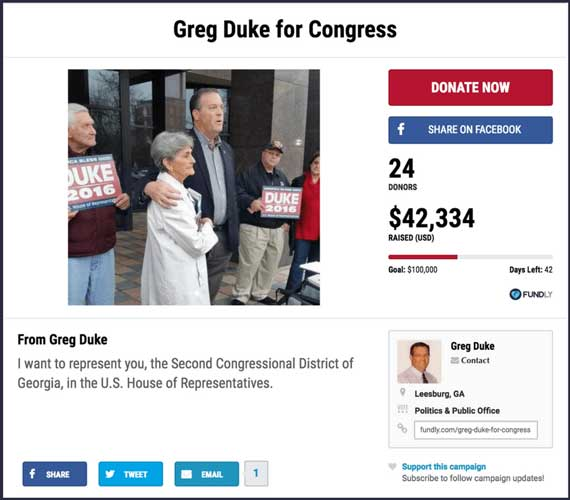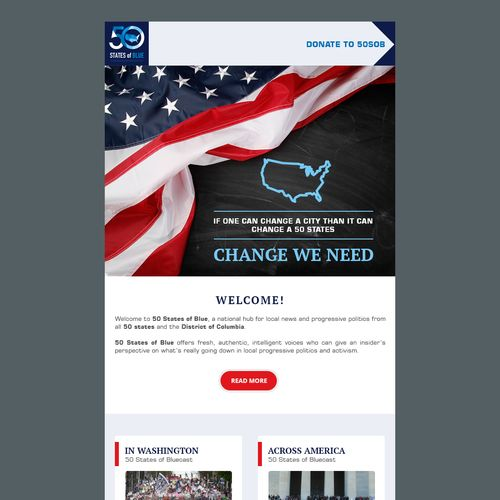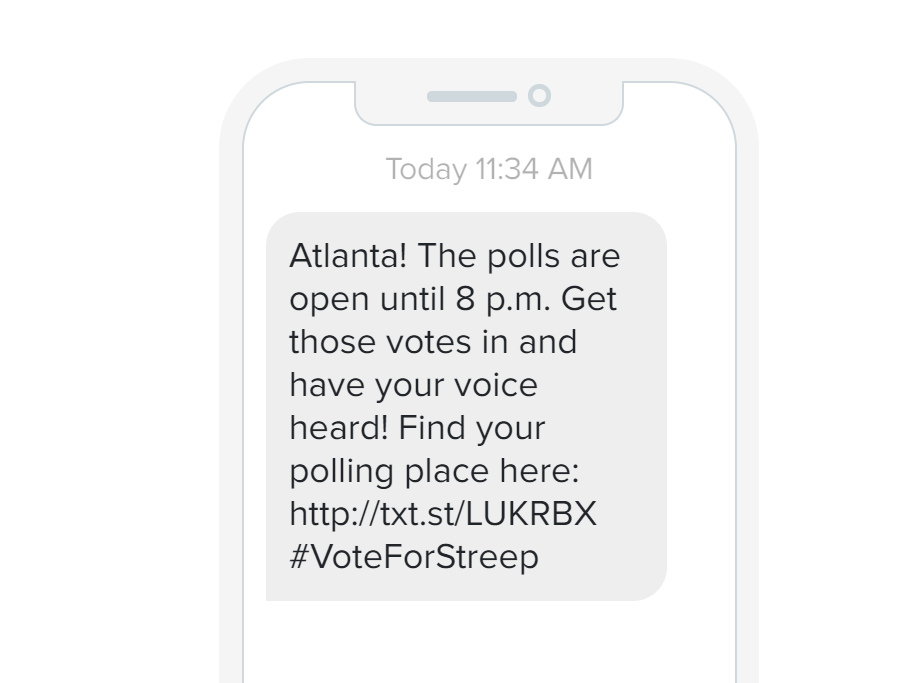130 days to the US presidential election and things are in full swing.
According to all major media outlets, just 2 days ago, polls showed that Biden has taken the lead over Trump in 6 major states:
Despite Sanders on the issues gaining momentum amongst the youth, the 78-year-old politician and lawmaker dropped out of the race recently, leaving voters to decide between Trump and Biden.
This brings me to the importance of marketing for politicians.
Just like businesses, politicians can get an edge over competitors with the right marketing tactics.
There are so many resources and platforms available now which make marketing for politicians much easier than before.
Whether you’re working for a state-level political campaign or a small-town campaign, here are some essentials that you must incorporate into your political marketing strategy:
#1. Keep your website updated
Your website is a core part of your political campaign.
It’s where voters will find personal information about your candidate, make donations, see the latest news, find out the candidate’s stance on various issues, engage with you etc.
This is why you need to have an entire IT team dedicated to your website.
They’ll have to upload every speech and news, fix glitches, work on improving the speed as more content is added and track fundraising efforts.
Here’s a screenshot from Greg Duke’s website, the Republican who ran for the 2016 Congress elections in the US.
This goes to show that it is always a great idea to add the estimated goal and funds raised, as well as any additional details to create trust and transparency between voters and the candidates.
Apart from that, you simply cannot skimp on investing in a professional IT service because even the slightest inconvenience could cost you a voter or donor.
The business industry expert Neil Patel says that you’re losing 7% of your website visitors with every second that your webpage does not load.
The optimised web page loading time should be under 3 seconds, so make sure you monitor that consistently because you will be expected to post live conferences, speeches, rally videos and other interactive content that can potentially slow down your website.
This also brings me to web design.
A lot of candidates want a website with everything on the homepage. They want fancy fonts, information, colors etc.
However, there are two problems that come with this – you will overwhelm most visitors with visual and information overload and website navigation will become harder for them, both that lead to the loss of visitors.
By choosing a sleek and simple website design, not only will you attract more visitors and reduce your bounce rate, but you will also reduce the risk of users abandoning your site slow loading time.
A simple picture, effective call to action and proper categorisation of internal pages is all you need to add on your homepage.
Visitors create an opinion about your website 0.07 seconds after opening it, which further proves why your website needs to be perfect.
Convinced you need to invest in your website? Check out some of the top web development companies in the US.
If you’re running a small campaign and cannot afford these, you can always opt for freelancers.
However, with that, it’s always best to integrate automation tools to your website such as Crazy Egg and ManyChat.
Tools like CrazyEgg will allow you monitor everything on your website.
You can conduct A/B split testing if donors are abandoning the payment page, use mouse recordings to see whether visitors can easily navigate through your website and other tools to help you keep your website top-notch.
ManyChat, on the other hand, offers chatbots which will deal with hundreds and thousands of voter queries.
You can feed the software relevant information and it will take it from there on.
All these tools aren’t too costly and you can always find skilled volunteers who can manage them; this cuts down on campaign costs significantly.
#2. Conduct an email & SMS Campaign
In addition to a good website, you can opt for cost effective channels that won’t dry out your resources.
If you’re running a small campaign, TV ads and billboards are out of the question.
A 30 second TV ad costs more than $1 million weekly (depending on the frequency and channels).
Plus, this may not even be as effective as digital marketing channels.
Thus, only presidential campaigns can afford and should opt for traditional marketing channels.
Marketing for politicians in today’s day and age only requires 3 main channels – SMS, email and social media.
While email generally boasts an open rate of 20% as compared to the 98% open rate of SMS, the audience that is into politics is one that checks email regularly.
You’re targeting individuals 18 and above, but the biggest age group that is actually invested in politics ranges from 25-40 years old.
This is because these working individuals are affected the most by government policies, laws, taxes etc.
According to Forbes, the average person checks their email 15 times a day.
This makes it a great channel to send voters newsletters with stories about the candidate, campaign updates etc.
The optimal frequency is 1 email per day so that you don’t spam the recipient and make sure they keep up to date with their candidate.
MailChimp is currently one of the leading email marketing platforms which makes it your best bet.
As for SMS, you can opt for ExpressText.
It’s one of the cheapest SMS platforms out there with a number of advanced features such as scheduled texts, hyperlink tracking, single and double opt ins etc.
Because of its open rate and speed, you’ll want to use SMS to deliver news that requires urgency.
Did your candidate make a blunder while giving a speech?
Rectify the situation by clarifying his/her stance and then send out an SMS to your voters so that they hear about the right version of events from you and not other sources.
SMS will also be extremely handy in the last few days before the election.
You can send voters poll information, timings, dates etc. just as a reminder to cast their vote.
Add a hyperlink or provide instructions on how they can find out their designated polling station:
Creating convenience will definitely sway them towards your side, especially the age group over 60 that is comfortable with text messages rather than tech savvy marketing platforms.
#3. Go for interactive content
Even though this is a trick that is used commonly to create customer relationships in the business industry, it can also be put to use when marketing for politicians.
Interactive content is one of the biggest marketing trends of 2020 – be it live videos, interactive episodes, polls etc.
As the campaign manager for a politician, you can use interactive content to create a relationship between your candidate and voters.
It’s no surprise that many people out there aren’t a fan of political issues but they still vote as part of being a responsible citizen.
This segment of voters is usually concentrated in the younguest voters i.e. 18-25 year olds.
They won’t be attending any rallies, conferences or subscribing to your SMS and email campaigns.
However, everyone in this day and age is avid user of social media so that is the best way you can get their attention.
I’ll discuss which social media channels to opt for when marketing for politicians, but for now, let’s focus on the purpose of live videos and interactive media.
To ensure maximum effectiveness, set up a live video on Facebook between 9 AM-2 PM on either a Tuesday, Wednesday or Thursday because that’s when you’ll find maximum users on the app, considering the target audience that you want to focus on.
Boost this video to increase viewers and enagagement.
You can also promote this video on Instagram if you want to capture the attention of your youngest voters, many of whom are not active users of Facebook.
You’ll notice that in COVID-19, this is an even better idea considering everybody is home and online platforms are the only mode of communication at the moment.
Apart from all these technicalities, make sure your candidate is well rehearsed for this.
Introduce the candidate to voters, urge them to talk about their personal lives and generally reveal their personality to candidates.
Take questions as well which allows for candid answers and increases transparency; thus, creating trust amongst voters.
As a millennial myself, I can say for a fact that our generation is more inclined towards voting for a candidate with good intentions and a heart in the right place.
Your job is to make sure you give the people what they want.
#4. Focus on the right platforms
As i’ve already discussed, Facebook is the most effective platform to capture the interest of potential voters.
Despite the app’s privacy issues and major lawsuits, it still remains the Number 1 social media app in the US with over a billion active users.
Plus, the app is most commonly used by 18-49 year olds according to 2020 surveys, which is the key demographic for political campaigns.
Remember to post once each day in the above mentioned timings to ensure that you keep voters updated on every issue and situation.
Another must have platform is Twitter.
According to Statista, it’s gaining more momentum than social media platforms:
The active user base on Twitter is also the same as Facebook which works perfectly when marketing for politicians.
It’s the perfect place to discuss key issues and get the insight of various experts and local citizens.
Just last year, Twitter banned political ads as the founders believed that ‘political messages should be earned not bought’.
Believe it or not, this actually works in your favour because when you get a political message across, users will know that you fought for it.
#5. Know the things to avoid
Last but not least, make sure you avoid negativity.
Do not call out your competitors. Not only is it unethical but it could also cost you voters because it says more about your candidate than it does about the other person.
Secondly, avoid topics on which your candidate’s stance is unsure or could potentially change. If there’s one thing that voters do not want to see, it’s a candidate going back on their word.
With that being said, your candidate should also have a clear narrative with what he/she does stand for.
Bernie Sanders gained a lot of support from the youth majorly due to his stance on eradicating student loans and his effort to move towards a greener environment.
Pick up 2-3 major issues, each that appeal to a certain segment, and work towards to those to gain support from these voters.
Thirdly and most importantly, listen to the people.
Geroge Floyd’s death, may he rest in peace, was a reminder to all politcians that it is the people that elect them.
They put their trust in one person in the hopes of bringing about the change that they are calling for.
The point is, if you don’t listen to people, you’ll either lose votes now or in the long run.
Many governors and legislators took no stand on the death of Floyd and their silence spoke volumes to protestors.
Only those politicians that are willing to bring about a change are speaking up and sidng with the people. Be different and stand with the people to win them over.
Conclusion
This sums up the essential things to keep in mind and implement when marketing for politicians.
Campaigning can often be tricky because voters expect a candidate to be perfect if they are to vote for them and marketing is something that will help you create awareness about all the positive things that your candidate has to offer.
This makes it a crucial part of any campaign.
To ensure effectiveness, make sure you invest in things that are worth it and do not waste time and resources in areas where they are not needed.









